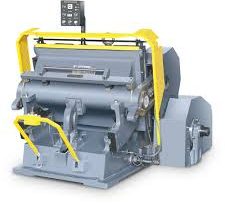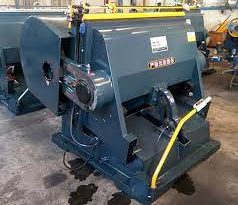“Driving Precision and Innovation: The Latest Technological Advancements in Die-Cutting Machinery and Their Impact on Manufacturing Efficiency”
Die-cutting machinery, integral to manufacturing industries ranging from packaging to electronics, has evolved significantly to meet modern production demands. This machinery uses sharp steel dies to stamp out precise shapes from various materials, enhancing product design and efficiency.
1. Enhanced Precision: Modern die-cutting machines are equipped with precision engineering technologies that ensure exact cuts, crucial for high-quality product finishing. The ability to produce complex shapes with high accuracy reduces waste and improves material utilization.
2. Automation and Speed: Advances in automation have transformed die-cutting machinery into highly efficient units that minimize manual labor and maximize output. Automated feeding and alignment systems, combined with faster cutting speeds, allow for high-volume production without sacrificing quality.
3. Versatility in Materials: Today’s die-cutters can handle a wide range of materials, from paper and cardboard to plastics and metals, making them indispensable in diverse industries. This versatility is further enhanced by modular dies that can be easily swapped to accommodate different material types and thicknesses.
4. Customization Capabilities: With programmable controls, operators can easily adjust machine settings to meet specific design requirements. This customization is vital for producing unique and specialized products, allowing businesses to cater to niche markets.
5. Integration with Digital Technologies: Integration with digital design software enables seamless transitions from design to production. Operators can directly import CAD files to the die-cutting machines, streamlining the workflow and reducing the potential for errors.
6. Energy Efficiency and Sustainability: Newer models are designed to be more energy-efficient, reducing the environmental impact of production processes. Additionally, the precision of modern die-cutting helps minimize waste material, supporting more sustainable manufacturing practices.
7. Enhanced Safety Features: Improved safety mechanisms, including sensors and guards, protect operators from the high-speed cutting actions, making the modern die-cutting environment safer and compliant with industry regulations.
Die-cutting machinery continues to be a cornerstone in manufacturing, driving innovation with its precision, speed, and adaptability. As technology advances, these machines are set to become even more efficient and integral to producing high-quality products across various industries.



